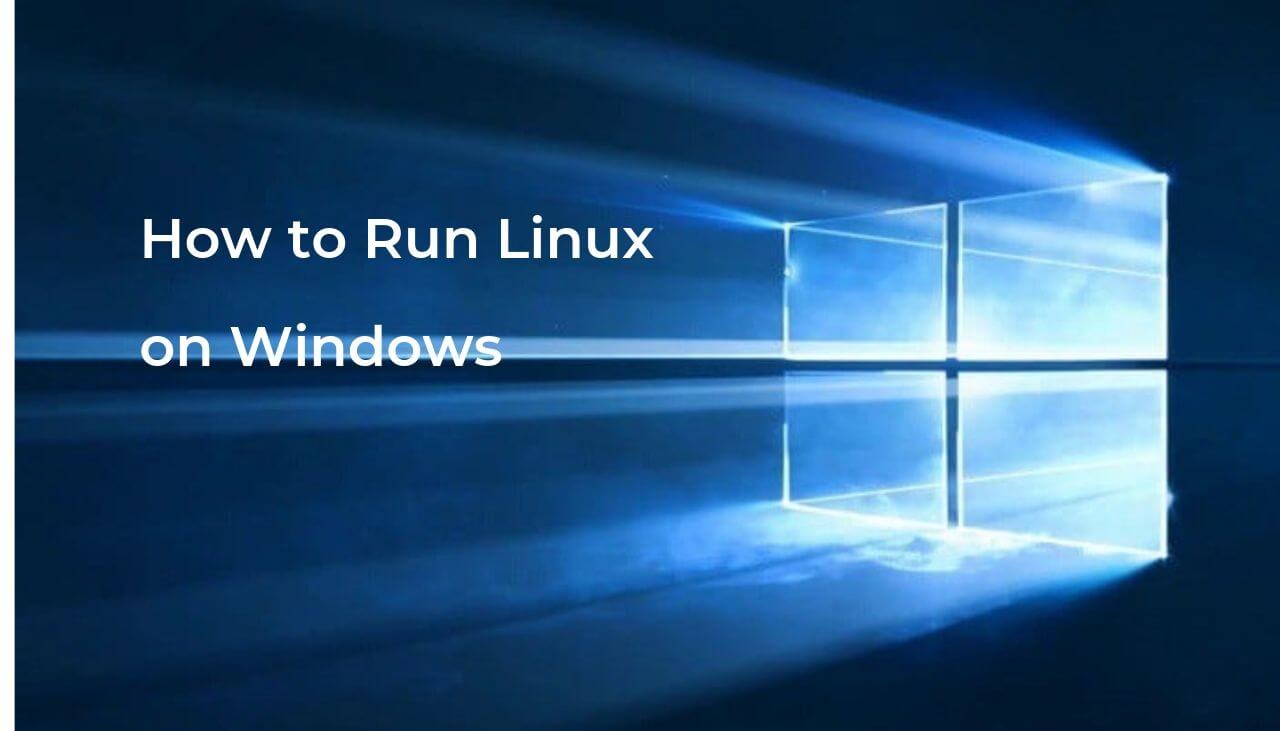It sounds like something straight out of a Skyrim mod where you can add Dark Souls in it but just like what Todd Howard said, “It just works.” No seriously, you can run Linux or Bash on Windows.
This works with any Linux program but make sure you follow the steps thoroughly especially if you want to do the Command Prompt route. You will need your Windows Subsystem activated to get you running. We’ll show you how later on in this article.
We’ll provide a step-by-step guide on how to do so. We will focus on Windows 10 64-Bit for this one. But first, let’s answer some questions.
Related: Top Security and Privacy Linux Distributions in 2019
Why the Need to Apply Linux on Windows?
So, why would you want Linux on Windows? Well, maybe because you’re looking to spice things up on your current OS. Maybe you’re tired of Windows buzzing you so often about its apps that you won’t ever use. Maybe you just a trustworthy open source OS that you can have full control over.
Is it Safe to Add an OS within an OS?
Technically, this isn’t a fully-fledged Linux OS within a Microsoft OS. Think of it as adding a Linux workbench in a Windows room. While you’re still using Windows, you can use the Linux program to manipulate and customize your OS. So yes, it’s more like modding Windows than replacing it as a whole. Because if the latter were the case, why purchase a Windows OS in the first place, right?
While it is simple enough to get things started with Linux on Windows, you need to make sure your PC can handle multitasking in the long run, especially if you’re planning on development solely on Linux within Windows.
Thankfully, Microsoft has allowed users to run Linux apps on the OS now. This is why they made a Windows Subsystem – so you can freely use Linux on the desktop. We’ll show you how.
Alright, without further ado, here are the steps to get you access to Linux in Windows 10.
Installing the Windows Subsystem
This is a key installation before anything else. If you apply Linux without this, you’ll get a 0x8007007e according to experienced users in the forums. To prevent that, do the following:
1. Click on the Windows button on the lower-left corner of your screen.
2. Press the cog icon to open up Settings.
3. In there, search for “Apps” to open up Apps & Features.
4. Look on your right and find the label that says “Related Settings.” Below it, you’ll see Programs and Features. Click on that one.
5. A new window will pop up, showing all your installed programs but don’t mind those. In that window, look at the left and find “Turn Windows features on or off” and click it.
6. It will open up a new window again. Wait for it to gather data. Once the loading has finished, scroll down until you find “Windows Subsystems for Linux.” Alright, now tick the checkbox to activate it and click OK.
7. Now, all you need to do is Restart.
8. Once your PC boots up again, hover to the Microsoft Page and look for your preferred Linux app in the search bar. There you have it.
Although, if you want a more command line approach, you can do so too – with the help of Windows PowerShell. Here’s how:
1. On the search bar on your lower-left screen, type in “powershell.” Click on the Windows PowerShell app in the results page.
2. Type the following: Enable-WindowsOptionalFeature -Online -FeatureName Microsoft-Windows-Subsystem-Linux
3. Press Enter.
4. Type Y and press Enter. This will automatically restart your PC.
Installing Linux on Your Windows 10
Now that we got the Windows Subsystem out of the time, it is time to get you rolling with Linux on your desktop. You can install Linux distros in one of two ways: Command Prompt and the good old Microsoft Store. Let’s start with the Command Prompt first.
Installing Linux through Command Prompt
1. On the search bar, type in “command prompt.” Click on the Command Prompt app once you see it.
2. For this case, you will need to choose one of the following based on your preferences: openSUSE Leap 42, SUSE Linux Enterprise Server 12, or Ubuntu
3. Type or copy/paste one of the following:
- opensuse-42
- sles-12
- ubuntu
4. Press Enter.
5. Whatever you choose, it will automatically run an installation. Follow the setup until you finish.
However, if you don’t like to go through all that, there’s always Microsoft Store to help you out.
Installing Linux through Microsoft Store
1. Open up your Microsoft Store via the Windows button on the lower-left corner of your screen.
2. Then, type in the following or click one of the links to go directly to them:
3. Open your preferred Linux distros and follow the setup until you are done. Do take note that you can install all three apps if you want.
Related: Kali Linux – This Is What You Need to Know Before You Start
However, openSUSE Leap 42, Sles-12 and Ubuntu are just the top most downloaded Linux apps. You can find more in the store, including Kali and Debian. Make sure you have the right system requirements to run them properly.
We hope these steps will help you in finally using Linux on your Windows computer. Just a reminder that you’ll need to activate the Windows Subsystem before anything else.
About the Author: Brian Stone
 Brian Stone has always been around computers since he was 8. After discovering he had a burning interest in computers, he aims to help the entire community of gamers by dedicating his time and life to help gamers and computer enthusiasts alike. Through his work, he wishes to help readers choose the best products and make the smartest investments.
Brian Stone has always been around computers since he was 8. After discovering he had a burning interest in computers, he aims to help the entire community of gamers by dedicating his time and life to help gamers and computer enthusiasts alike. Through his work, he wishes to help readers choose the best products and make the smartest investments.


